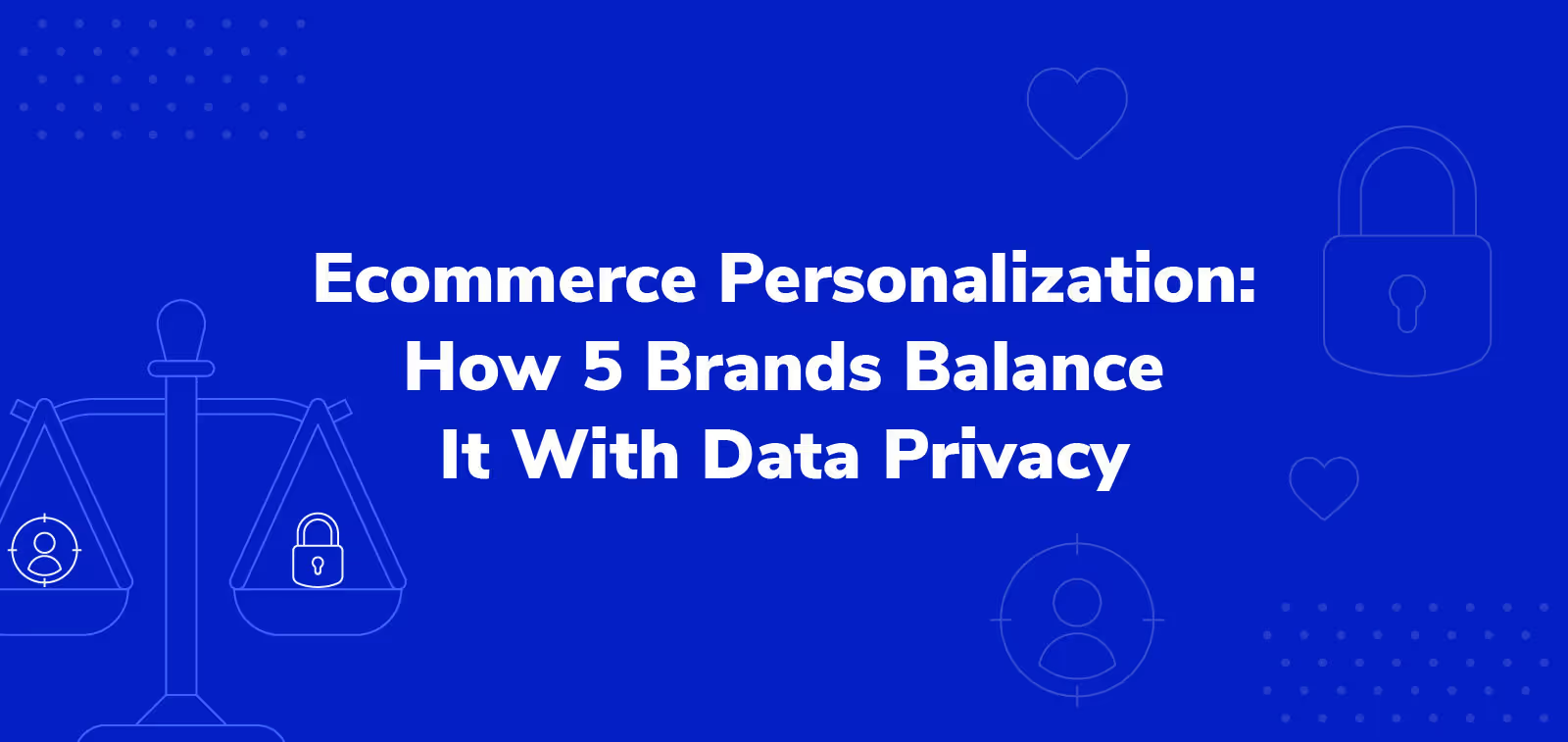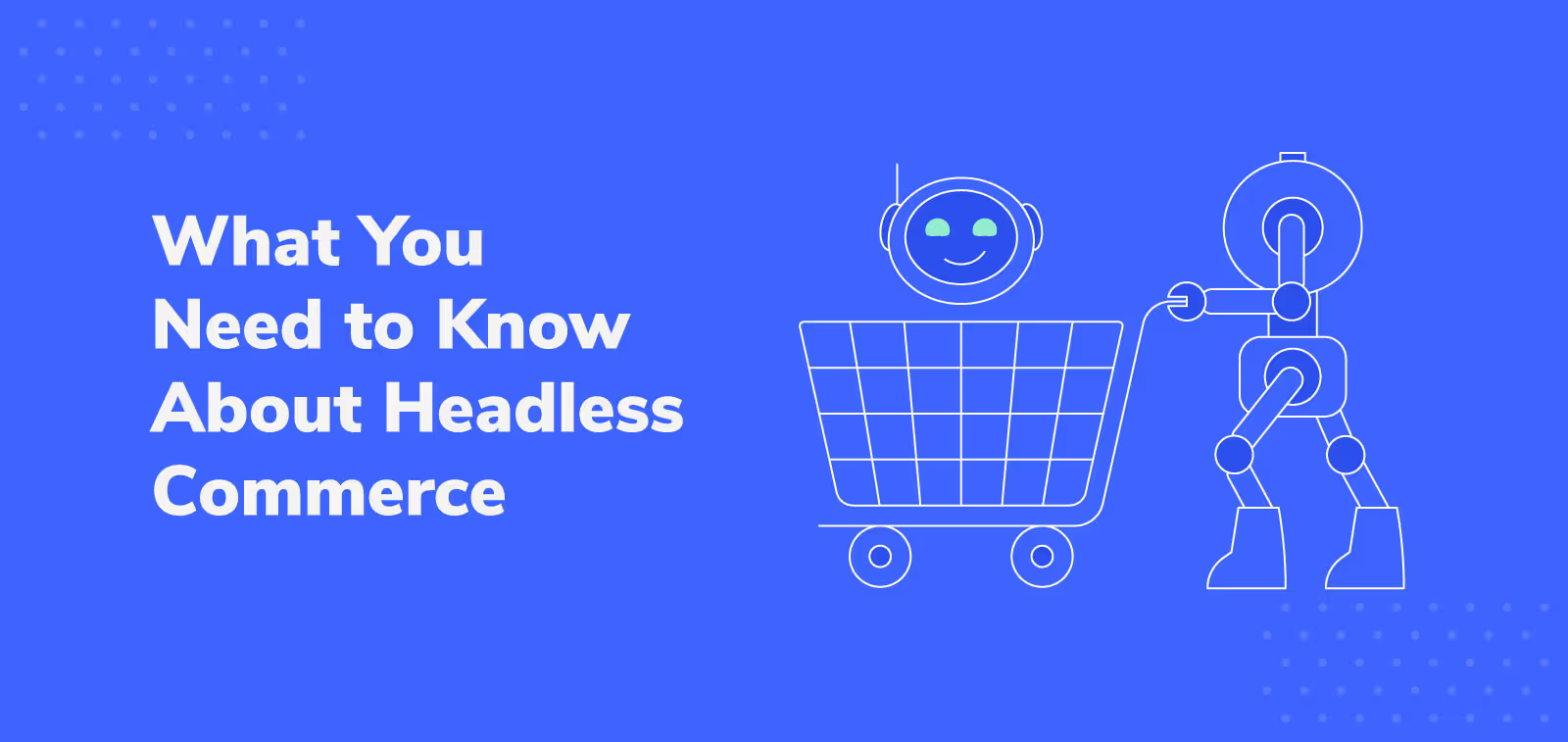The 7 Most Common Friction Points in Ecommerce (and How to Overcome Them)

While the pandemic may have had an impact on virtually every other aspect of retail, interestingly, it didn’t change one vital ecommerce metric: cart abandonment rate.
You might think that cart abandonment rates would've dropped as the pandemic progressed and more people shopped online. But no.
From Q2 of 2020 through Q2 of 2021, the rate of online shopping cart abandonment remained unchanged. Statista’s latest data shows the desktop rate hovers around 66%. For mobile, it’s 81%.
What kept cart abandonment so stubbornly high? Friction points didn’t change, so there was no reason for the proportion of carts that were abandoned to drop, even as the total number of transactions increased. Ultimately, too few merchants were simplifying complex buyer journeys, leaving shoppers less likely to buy no matter the outside factors pushing online shopping.
However, by attacking each friction point, ecommerce leaders can defy the trend — achieving fewer abandoned carts and more revenue.
1. A Hard-to-Find Website
Customers may know your business but struggle to find you online. Frustrated, many will switch to a competitor. Instead, make it easy for customers to find you across online channels.
Getting found can be a challenge if you don’t have a unique name or the obvious domain for your business. Consider the exercise bike brand Peloton. The business uses onepeloton.com as its main site because Peloton.com belongs to an oil and gas software company.
Chances are, peloton.com gets traffic from people looking for an exercise bike. That traffic is not overly helpful for either company and probably causes quite a bit of confusion for customers. But Peloton can still help customers reach its site through search engine results.
How to Make Your Website Easy to Find
One way Peloton has gone about helping customers find its site through search is by bidding on keywords related to its preferred domain for both text-based search campaign ads and image-based shopping campaign promotions.

Both ad types appear at the top of search engine result pages (SERPs), so Peloton grabs customers’ attention before they reach organic content. And with the shopping campaigns, searchers know the ad leads to a site selling exercise bikes because they can see the product photos.

Second, Peloton's highly active social media presence boosts its visibility on search. Google automatically shows a company's Twitter posts when people search for the brand's name.

Luckily for Peloton, the oil and gas software company with the same name doesn't have a Twitter account. “Peloton” searchers looking for the fitness company's site can easily find the right brand via all of the tweets about rides and fitness.
2. A Clunky Mobile Experience
Mobile cart abandonment rates are around 15% higher on average than they are for desktop. While there’s no one clear reason cart abandonment is worse on mobile, it’s a good bet that clunky mobile experiences explain some of the difference.
During Baymard Institute’s extensive mobile user experience (UX) testing, 63% of participants abandoned carts because of poor design, like a missing page overview, unexpected back-button results, or inadvertent or unregistered taps.

One participant in Baymard’s user testing of Newegg’s mobile site accidentally tapped the last item in a list of products. After clicking back, he was right back at the top of the list and had to scroll all the way down again to get to where he was. On a desktop, the problem wouldn’t have developed, as scrolling and clicking use different inputs (mouse wheel or sidebar versus left-clicking). On mobile, such UI issues are a real source of friction and a potential for cart abandonment.
As time goes on, there’s reason to believe the market will become less forgiving of bad mobile UX. Research by Sitecore reveals that 63% of Gen Zers have less patience for bad mobile ecommerce UX than older groups.
How to Clean Up Your Mobile Site Experience
Assuming you’ve already optimized your site speed, your next step is to identify desktop features that have been carried over to your mobile site.
Talk to your lead web programmer to develop a user testing program to systematically identify UX/UI issues. With user testing results in-hand, make sure developer KPIs reflect not only on desktop but on mobile UX, too.
The kinds of issues to watch for could include hyperlink text or buttons that work well on desktop but are too small to easily tap on mobile. Text and images that look great on desktop but become squashed or oddly arranged on mobile are another common issue.

There are several possible reasons why these issues could happen, but the most common is that your mobile site is being automatically generated from your desktop site with no human input to “common-sense” test it and make adjustments. As a result, your mobile site is pulling the same assets (text, tiles, images, etc.) from the same back end as your desktop and cramming them into a mobile-shaped area.
For a more comprehensive resource on ecommerce UX design, check out this guide by Dinarys.
3. Generic Emails
How many hours do you spend per week deleting emails from brands that don’t seem relevant to you? Probably a lot if you’re like many of today’s shoppers.
According to Statista, at least 42% of UK and US consumers expect personalized content that is directly relevant to them. Email is no exception to that expectation.
Craft messages that address recipients’ specific needs to encourage opens, clicks, and conversions.
How to Send Personalized Emails at Scale
An email marketing platform like Campaign Monitor uses customer data from the rest of your tech stack — like demographics and product preferences — to automatically create and send personalized emails.
These email platforms can even send messages at opportune times based on customers’ interactions with your site and ads.
Imagine a customer visits a product page from an ad but doesn’t buy. You’ll want to send a follow-up email about that specific product within the next 24 hours. Within such a short timeframe, there’s a higher chance the product is still relevant to their needs.
To take advantage of this opportunity, set up a trigger in your email marketing platform that sends shoppers, who browse a product and then leave, an email featuring the same item one day later. This is a level of personalized attention that a quarterly email blast can’t hope to match.
4. Bland or Unclear Product Visuals
Shoppers use images to evaluate products. Additional usability testing by Baymard shows that 56% of visitors explore images first after arriving on a page. If there are enough high-quality images to see that the product looks suitable, customers have a reason to convert. But if shoppers can’t tell from the pictures if the product meets their needs, they may have doubts and won’t check out.
Baymard’s research also shows that one-quarter of ecommerce sites don’t offer high enough resolution or large enough images for consumers to evaluate their products.
Ikea has substantially improved the quality and range of its product images over time. Back in 2014, the images on product pages were fewer in number, smaller in size, and lacking in product detail.

Image via web.archive.org
Today, Ikea's product pages feature multiple large images of each item from multiple angles in a variety of contexts, giving the viewer a better idea of the product and how it would fit in their home.

Image via Ikea
Ikea's images are fully zoomable, show the product in different lighting, and display the texture and material clearly. Online shoppers are able to get an excellent sense of the scale, details, and quality of the product. As a result, customers are more likely to feel confident enough that the product matches their expectations to purchase, and less likely to return it due to unmet expectations.
How to Satisfy Shoppers with Your Photos
Ensure there are clear guidelines in place for product photos. With an explicit set of best practices in place, your team will know if a product is being properly represented.
Areas your guidelines should cover include:
- Expected image resolution
- Correct product orientation in each photo
- Use of lighting based on different types of products (this resource offers a great breakdown of when to choose natural versus artificial light)
- Where and how to include people or pets
- Proper equipment to use
After your guidelines have been prepared, assign responsibility to your website’s content manager to ensure that any product images uploaded reflect best practices.
Where you can, have your team source quality photography from the supplier. If you can’t, or their images don’t meet your brand guidelines, don’t hesitate to take the initiative. This could mean bringing product photography in-house or contracting photographers for individual products as needed. A helpful tool in this process could be a background remover for photo editing purposes like Picsart. It helps keep the product's focus sharp and removes any distracting elements from the image. Additionally, to elevate the visual appeal of your photos, you might consider using BeFunky to enhance images. The photo editor can significantly improve your product images, making them more vibrant and attractive and aligning them more closely with your brand guidelines.
How to Wow Customers with Video, AR, and VR
Just because you now have incredible photos of your products doesn’t mean you should stop there.
Record videos of items in use to give shoppers a better sense of the products. Videos are rarely harder to produce than photos and help customers visualize themselves using your products.
To go the extra mile, introduce AR (augmented reality). First, it will wow customers with an experience many find novel. Second, AR helps shoppers get a feel for the product in their environment. Data from AWS shows AR can boost engagement by as much as 66%.
AR works for a surprising array of products. Dulux uses AR in its Visualizer App to show customers how over 1,200 paint colors would look on their walls.

The customer doesn’t have to paint a sample and imagine how it would look across the entire surface. Users can see the entire room in their new color, with no repainting needed if they don’t like it.
5. Excessive Checkout Pages
Every extra step in the checkout process increases the likelihood that customers might forget why they wanted to buy.
Data reveals that 17% of users who abandoned their cart and weren’t “just browsing” did so because the checkout process was too long or complicated. If your checkout process has more steps than absolutely necessary, you might be leaving money on the table.
For example, Huel’s checkout process takes you through a minimum of five distinct pages, including upsell, shipping, and payment pages.
How to Reduce Friction at Checkout
Historically, people expected separate pages for different processes like shipping and payment. But there’s no reason to have more than a single page anymore. By condensing the checkout process to a single step, businesses can keep those 18% of users averse to long checkouts on board.
There are many single-page solutions available. These include extensions for ecommerce platforms. For example, OneStepCheckout for Adobe Commerce or Acquire for Shopify. Most can be easily integrated with your existing site.
To reduce friction even further, merchants can also try one-click checkout. These don’t need a shopper to click through to a website. Instead, users can purchase directly from content anywhere online. Such technology is known as headless checkout. For example, a customer who’s signed into a one-click checkout provider like Fast or Bolt can buy directly from a social media or blog post.

One-click checkout is best for businesses aiming to capitalize on impulse buys. Verticals like fashion, beauty, and low-cost electronics are all well-positioned for impulse buys.
However, one-click checkout may not work well for purchases requiring more deliberation, like home gym equipment. If that sounds like your business, a streamlined one-step checkout may be enough.
6. Slow Site Speeds
The longer a page takes to load, the less likely a shopper is to stick around. Google’s own data shows that if a mobile page takes three seconds to load, more than half of visitors give up and leave. If your page has slow loading times, there’s a good chance you stand to win more business by speeding it up.
One Google study found that after six months of a website being live, 40% of companies start losing their website performance. If you’ve been in business for a while and haven’t evaluated your site performance in a while, consider this your call to action.
How to Accelerate Site Load Speeds as a Marketing Leader
As with most business processes, accountability helps. The first step is to define success. Work with your lead developer to set a performance budget for your development team. The budget should set goals for load times with different internet speeds. For example, aim for interactivity on a slow 3G connection within four seconds.
To help you benchmark your current site performance, check your site speed for free here.
Build these goals into reporting as KPIs. This approach helped Experian cut loading times from eight seconds to below one and a half seconds. When the frozen meal service COOK cut load times by 850 milliseconds, conversions went up 7%.
7. Customers Don’t Trust Your Site
Online shoppers can be cautious, sticking to high-profile sites they trust because their name recognition proves their legitimacy. This can lead to buyers establishing habits like shopping on a single site by default for each vertical. For example, Chewy is the go-to pet supplies retailer for many US pet owners and the largest online pet brand in the country.
These patterns of consolidation saw the top 10 online stores’ share of the global ecommerce market grow from 54.5% in 2017 to 60.1% in 2020, an eye-watering amount of business. As more of the market falls into the hands of the well-trusted top 10 stores, smaller companies must either struggle over the ever-diminishing share that remains or get competitive on trust.
How to Build Trust with Online Shoppers
In this environment, ecommerce decision makers should focus on building trust through value-add services like product protection.
A well-regarded product protection service like Extend can give buyers confidence that their product has extra coverage. It shows you stand by your product, and customers know they can have their product repaired or replaced if a covered failure or damage occurs. As a result, they’re more likely to purchase.
Further, shoppers may have seen Extend on other sites they’re familiar with, and some may have even purchased Extend product protection before. This brand recognition can help to demonstrate the legitimacy of your own business and inspire more brand trust.
To explore these and other benefits of modern payment protection, book a free demo.
Aaron Sullivan is senior content marketing manager at Extend. He specializes in writing about e-commerce, finance, entertainment, and beer.
.svg)












































.avif)











